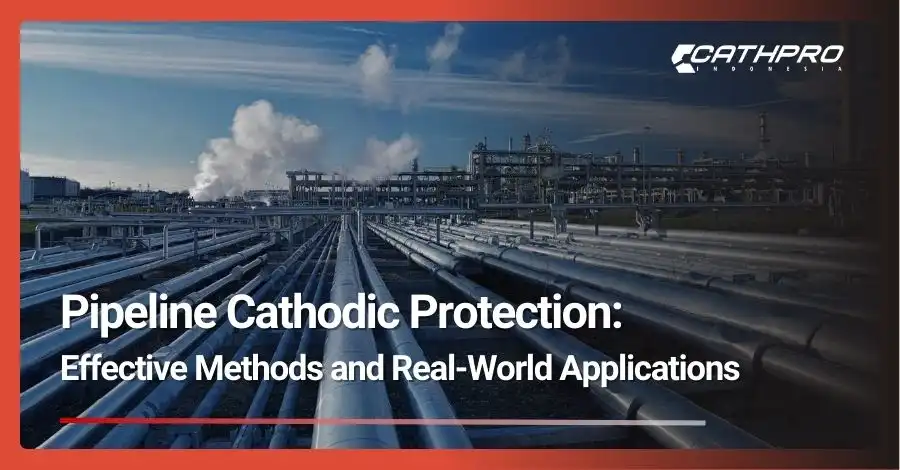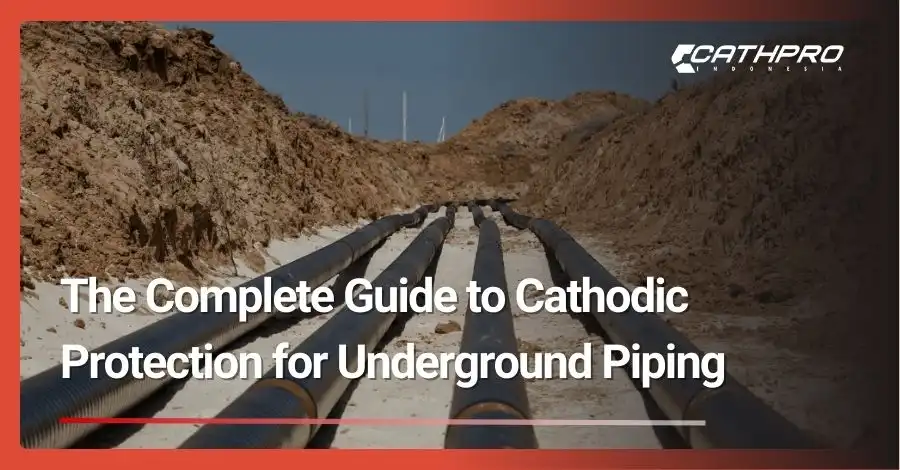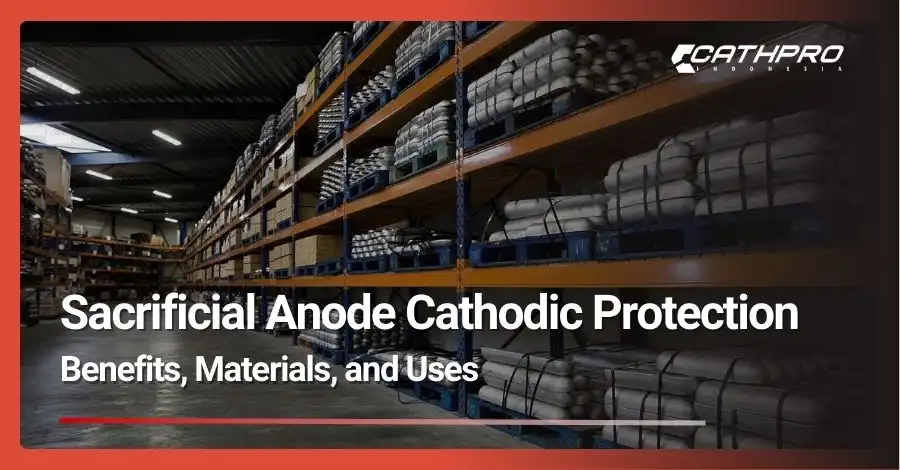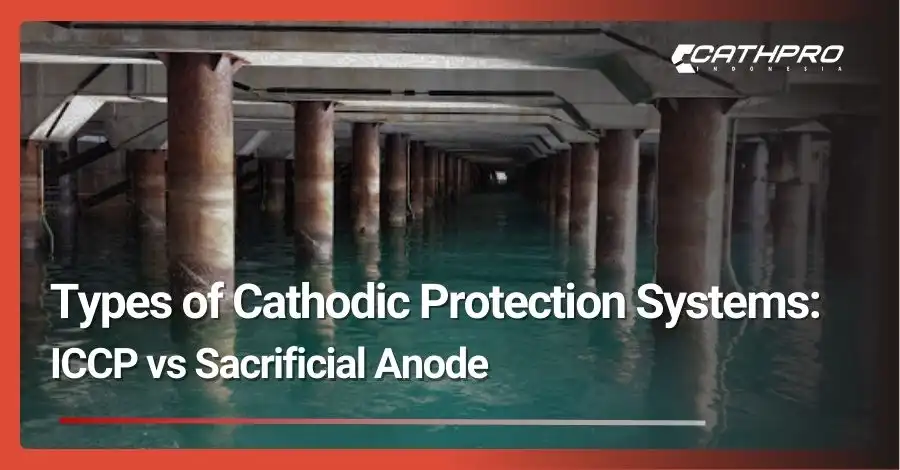What if a single corroded section could bring down an entire multi-billion dollar pipeline system? Pipeline cathodic protection stands as the invisible guardian that prevents this nightmare scenario from becoming reality. This sophisticated electrochemical process creates a protective barrier around underground and submerged pipelines, essentially turning the entire structure into a cathode to prevent corrosion.
Corrosion represents one of the most significant threats to pipeline safety and integrity worldwide. According to industry statistics, corrosion-related incidents account for approximately 20% of all pipeline failures, resulting in billions of dollars in damages, environmental contamination, and potential safety hazards. The relentless attack of electrochemical reactions slowly eats away at metal pipelines, weakening their structural integrity over time.
Modern corrosion control for pipelines has evolved into a precise science that combines advanced materials, monitoring systems, and proven electrochemical principles. Understanding these protection methods isn’t just technical knowledge—it’s essential for anyone involved in pipeline operations, maintenance, or safety management.
Common Pipeline Corrosion Challenges
Pipeline corrosion occurs through complex electrochemical processes influenced by multiple environmental factors. Soil resistivity plays a crucial role, as low-resistivity soils create more aggressive corrosive conditions by allowing easier flow of electrical current between anodic and cathodic areas on the pipeline surface.
Moisture content significantly accelerates corrosion rates, particularly when combined with dissolved salts, acids, or other corrosive chemicals in the surrounding environment. Temperature fluctuations, pH levels, and the presence of sulfate-reducing bacteria create additional challenges that can dramatically increase corrosion rates in specific locations.
Pipeline material vulnerabilities vary depending on the type of steel, coating quality, and manufacturing processes used. Even high-grade pipeline steel can develop weak points at welds, joints, or areas where protective coatings have been damaged during installation. These vulnerable spots become prime targets for accelerated corrosion, potentially compromising the entire pipeline integrity protection system.
Methods of Pipeline Cathodic Protection
Sacrificial Anode Cathodic Protection for Pipelines
Sacrificial anode cathodic protection operates on a simple yet effective principle: connecting a more electrically active metal to the pipeline creates a galvanic cell where the anode corrodes instead of the pipeline. This method literally sacrifices one material to protect another, making it an ideal solution for many underground pipeline applications.
Common materials used in sacrificial anode systems include magnesium, zinc, and aluminum alloys, each selected based on specific soil conditions and protection requirements. Magnesium anodes provide the highest driving voltage, making them excellent for high-resistivity soils, while zinc anodes offer longer service life in moderate conditions.
The effectiveness of sacrificial anode cathodic protection depends on proper anode placement, adequate anode-to-electrolyte contact, and regular monitoring of protection levels. This pipeline cathodic protection methods approach works particularly well for shorter pipeline segments, distribution systems, and areas where external power sources are unavailable or impractical.
Impressed Current Cathodic Protection (ICCP) for Pipelines
Impressed current cathodic protection (ICCP) systems use external power sources, typically rectifiers, to drive protective current from strategically placed inert anodes to the pipeline structure. This method offers precise control over protection levels and can protect much larger pipeline networks compared to sacrificial anode systems.
Rectifiers convert alternating current to direct current, providing the electrical driving force needed to maintain adequate protection levels across extensive pipeline networks. Inert anodes, made from materials like high-silicon cast iron, graphite, or mixed metal oxides, distribute protective current while resisting consumption themselves.
The benefits for large-scale oil and gas networks are substantial, as ICCP systems can protect pipeline segments spanning hundreds of miles with relatively few installation points. This pipeline protection system approach allows for remote monitoring, automatic adjustment of protection levels, and integration with sophisticated pipeline management systems.
Read also: Cathodic Protection System Installation
Design Considerations in Pipeline Cathodic Protection
Effective pipeline cathodic protection design requires comprehensive analysis of soil conditions along the entire pipeline route. Soil resistivity surveys, corrosivity testing, and environmental assessments provide critical data needed to determine optimal protection system configurations and component sizing.
Pipeline coating quality significantly impacts cathodic protection system requirements, as high-quality coatings reduce current demand and allow protection systems to operate more efficiently. Holiday detection surveys identify coating defects that require additional protection, while coating disbondment testing reveals areas where protective current may not reach effectively.
Current demand calculations must account for pipeline surface area, coating efficiency, soil conditions, and desired protection criteria. Modern pipeline monitoring system technology enables continuous assessment of protection levels, allowing operators to optimize system performance and identify potential problems before they become critical issues.
Read also: Top Impressed Current Cathodic Protection Companies
Applications Across Industries
Oil and gas transmission pipelines represent the largest application area for pipeline cathodic protection applications, with thousands of miles of high-pressure pipelines requiring continuous protection from corrosion. These systems often combine multiple protection methods and sophisticated monitoring equipment to ensure reliable operation and regulatory compliance.
Water distribution pipelines in municipal systems rely heavily on cathodic protection to maintain safe drinking water delivery and prevent costly main breaks. These applications often face unique challenges from varying soil conditions, stray electrical currents, and the need for long-term reliability with minimal maintenance.
Industrial chemical pipelines transporting corrosive materials require specialized pipeline corrosion solutions designed to handle aggressive environments and maintain strict safety standards. These applications often incorporate advanced monitoring systems and redundant protection methods to ensure continuous operation and environmental protection.
Advantages of Cathodic Protection for Pipelines
The pipeline protection benefits extend far beyond simple corrosion prevention, offering substantial economic and operational advantages. Properly designed cathodic protection systems can extend pipeline service life by decades, dramatically reducing replacement costs and operational disruptions.
Reduced risk of leaks and accidents provides both economic and safety benefits, as pipeline failures can result in catastrophic environmental damage, safety hazards, and regulatory penalties. Effective corrosion prevention pipelines strategies help maintain operational integrity and public confidence in pipeline transportation systems.
Compliance with international standards such as NACE, API, and ISO requirements ensures that pipeline operators meet regulatory obligations while following industry best practices. These standards provide frameworks for design, installation, monitoring, and maintenance of cathodic protection systems that have been proven effective across diverse applications worldwide.
Conclusion
Pipeline cathodic protection system technology represents a critical component of modern pipeline infrastructure, providing reliable protection against the relentless threat of corrosion. From sacrificial anode systems protecting local distribution networks to sophisticated impressed current systems safeguarding continental transmission pipelines, these protection methods have proven their value through decades of successful operation.
The importance of expert design and regular maintenance cannot be overstated, as even the most advanced pipeline corrosion control systems require ongoing attention to maintain optimal performance. Professional assessment, proper installation, and systematic monitoring form the foundation of effective pipeline protection programs.
Ready to protect your pipeline investment with proven cathodic protection solutions? Contact Cathpro Indonesia, our specialist corrosion control service, today for a comprehensive assessment of your pipeline protection needs and discover how advanced cathodic protection systems can extend asset life while ensuring safe, reliable operation for years to come.





